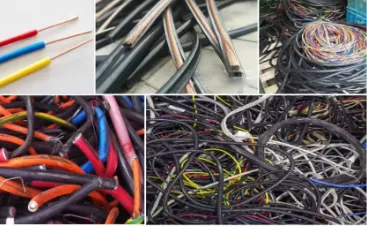

nov. . 15, 2024 05:45 Back to list
The Importance of Scrap Iron Shredders in Recycling and Resource Recovery
In today's world, where sustainability and resource conservation are paramount, the role of scrap iron shredders has become increasingly significant. These machines are essential for processing and recycling scrap metal, particularly iron, which constitutes a large portion of metal waste generated from various industries. The recycling of scrap iron not only conserves natural resources but also minimizes environmental pollution, making shredders an integral part of the metal recycling industry.
Scrap iron shredders are designed to break down large volumes of scrap metal into smaller, more manageable pieces. This shredding process enables metal recyclers to efficiently separate ferrous metals from non-ferrous materials. By reducing the size of the metal, shredders facilitate a more efficient sorting process, allowing for a higher recovery rate of valuable metals. This is crucial for industries that depend on recycled materials to produce new products, thereby reducing their reliance on virgin metals and contributing to a more sustainable circular economy.
The operation of a scrap iron shredder typically involves several stages. Initially, the scrap metal is fed into a hopper, where it is then fed into the shredding chamber. The shredder uses powerful rotating blades or hammers to crush and shred the metal into smaller pieces. These pieces are then passed through magnetic separators, which extract ferrous metals, while non-ferrous materials are sorted and collected for further processing. This process not only enhances the quality of the recovered metal but also ensures that the recycling operation is efficient and effective.

Moreover, scrap iron shredders have evolved significantly over the years, incorporating advanced technologies that enhance their effectiveness and efficiency. Modern shredders are equipped with sophisticated control systems, allowing operators to monitor and optimize the shredding process in real-time. Additionally, many shredders are designed to minimize energy consumption, reducing operational costs and environmental impact. Innovations such as improved blade design and automated sorting systems have further increased the efficiency of metal recovery and processing.
The environmental benefits of scrap iron shredders cannot be overstated. Recycling scrap metal reduces the demand for mining and extracting new raw materials, which are energy-intensive processes that contribute to environmental degradation. Furthermore, shredding scrap iron helps in reducing landfill waste, as metal does not decompose and can occupy land for hundreds of years. By promoting the recycling of metals, shredders play a crucial role in reducing greenhouse gas emissions associated with metal production.
In conclusion, scrap iron shredders are vital for effective metal recycling and resource recovery. With their ability to efficiently process scrap metal, facilitate material separation, and minimize environmental impact, they contribute significantly to creating a sustainable future. As the global community continues to prioritize sustainability, the importance of scrap iron shredders in the recycling industry will only grow. Investing in advanced shredding technologies and improving recycling processes will be essential for meeting the increasing demand for recycled materials and achieving environmental conservation goals. By embracing these innovations, we can move closer to a circular economy that values resources and prioritizes sustainability.
Latest news
Troubleshooting Common Eddy Separator Problems
NewsJul.04,2025
The Role of Metal Recycling Plants in Circular Economy
NewsJul.04,2025
The Impact of Recycling Line Pickers on Waste Management Costs
NewsJul.04,2025
Safety Features Every Metal Shredder Should Have
NewsJul.04,2025
How Industrial Shredders Improve Waste Management Systems
NewsJul.04,2025
How Cable Granulators Contribute to Sustainable Recycling
NewsJul.04,2025